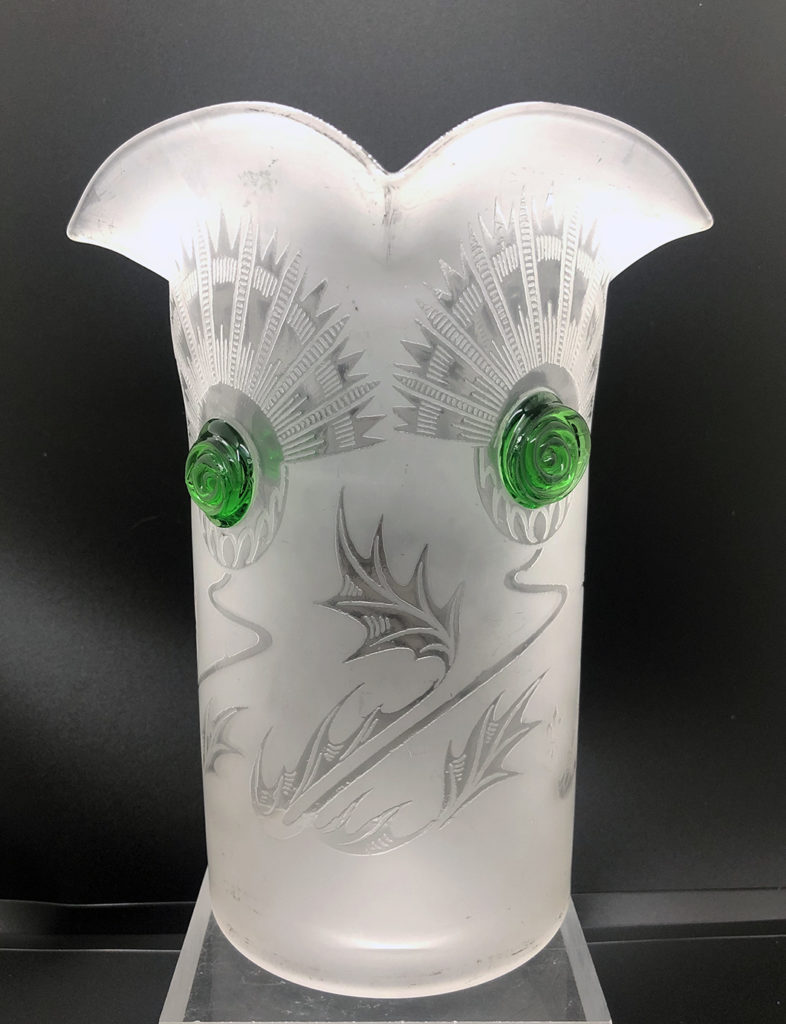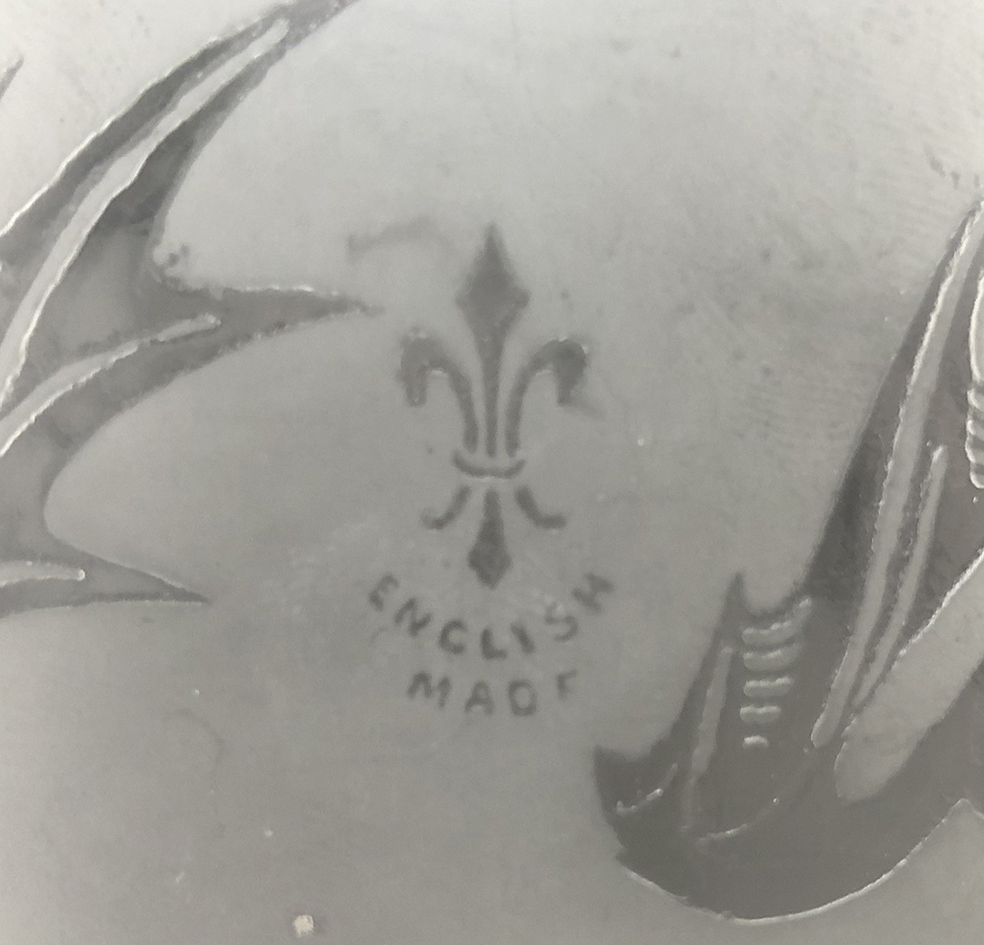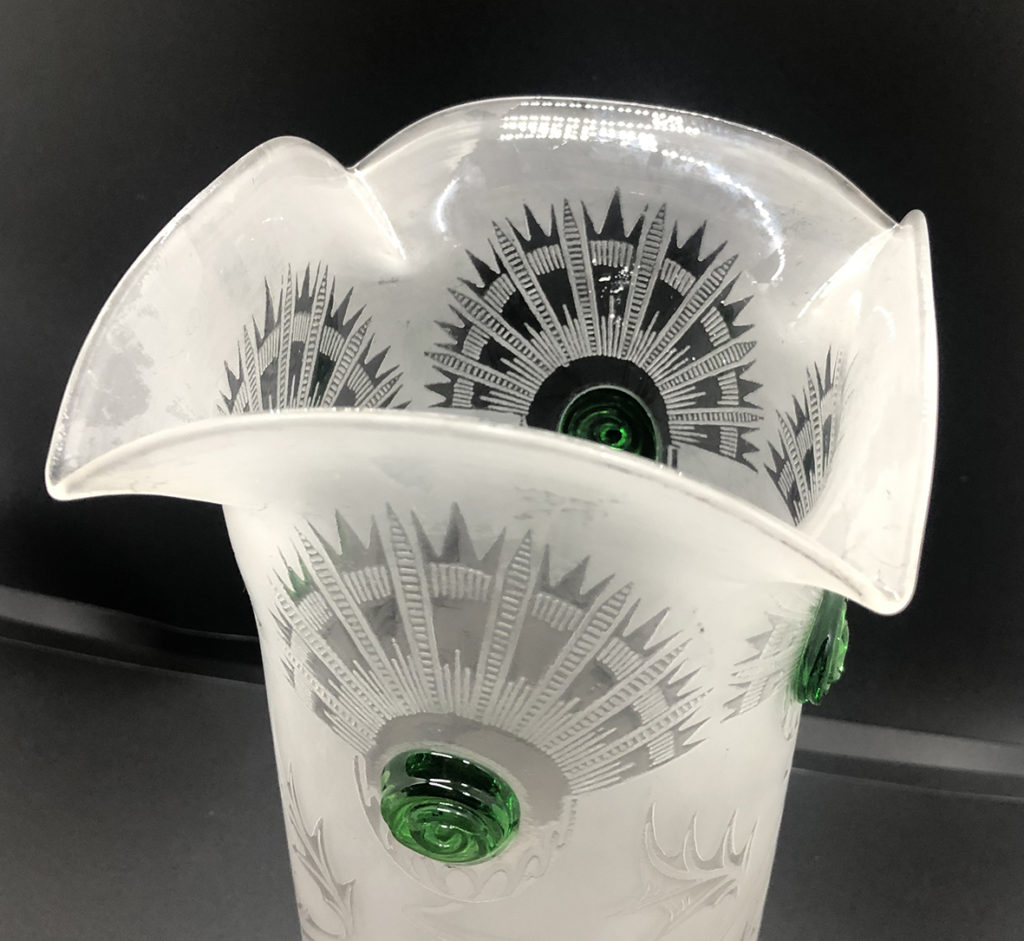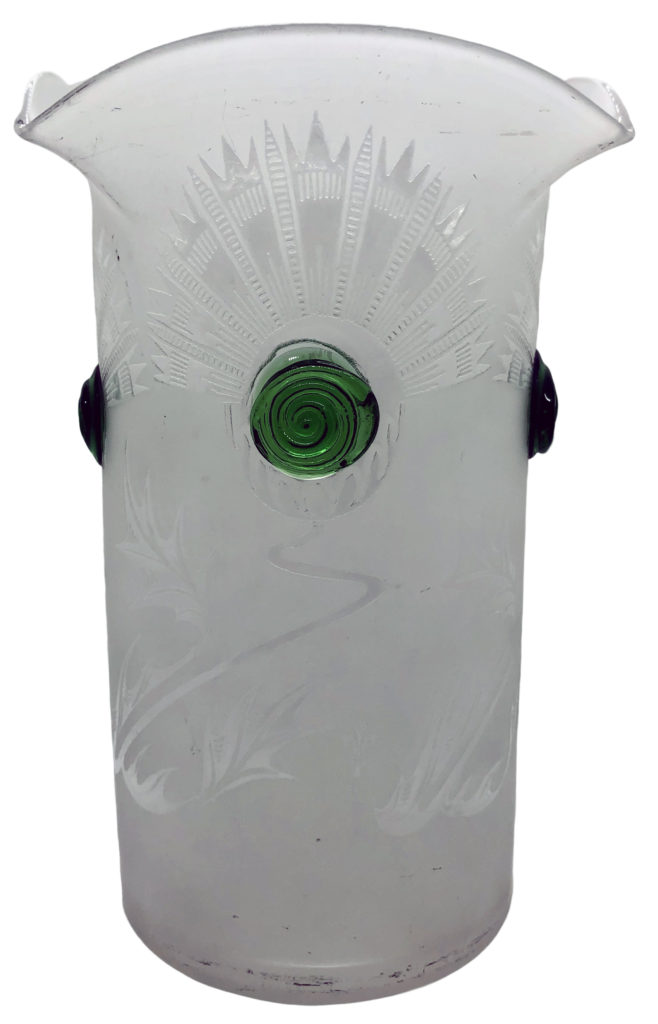
Sometimes we don’t know what it is. Well, actually, it’s obvious what it is – a glass vase. With an Art Deco pattern. The more astute of you will know that it was firstly mould blown, with hot-worked green swirls being then applied. It was then acid-etched with an Art Deco floral and foliate pattern using a ‘resist’ or a decal. Where the resist or decal was applied, the cloud of acid sprayed at it couldn’t touch the shiny glass surface and make it matte. It’s very finely blown and delicate, and it rings beautifully if tapped, like all those TV experts do with a fine piece of glass…. It clearly has age and dates from the Art Deco period, in terms of the design, quality, and manufacturing processes, the wear to the matting, and a pleasing network of ‘good wear’ on the base.
But who made it? Who designed it?

There are few clues. In terms of style, Stuart produced a range of colourless floriform glass with applied green trails during the Art Nouveau period. But this seems unlike them, partly due to the acid treatment and, of course, the later style. Then there’s Stevens & Williams – a suggestion strengthened by a mark within the pattern on the side, comprising a stylised fleur-de-lis and ‘ENGLISH MADE’. I only know of one British company that used a fleur-de-lis motif, and that is Stevens & Williams, a.k.a. Royal Brierley. But the style of the mark is unlike the mark used by this esteemed British glass company. Consulting my library of books, including ‘the’ book on the company, yielded nothing – not even something close to this design and method of manufacture.

I count myself very lucky in having the friends in the business that I do. I try to help them as much as they help me – when I can. So, it being an example of British glass, I contacted my friend Charles Hajdamach, as he has written several internationally-respected magnum opus books on British glass and is someone I hold in the highest esteem. His knowledge and expertise is unparalleled. Sadly, he didn’t know who made it, but kindly passed on my images to the descendant of the family who owned Stevens & Williams. Who didn’t know either. He suggested the fleur-de-lis “looked very like S&W” but also that the mark incorporated into the design “seemed strange” for Stevens & Williams “...as does the design“. Was it a prototype, maybe?

It just goes to show that we don’t know it all and that my much repeated statement about one of the delights of this business is true – every day you learn something new. And that element of surprise and discovery is part of what makes it all so exciting and worthwhile. And I’d love to learn more about this vase. It’s not that ‘foxing the experts‘ is a bad thing – it’s a good thing, as we all learn more in the end. To be honest, it’s nice quality things like this – that nobody knows about – that fire my mind and soul. There’s a journey to be made and a story to uncover! Let’s get going!
As with everything I own, I only bought it because I like it. I unearthed it from the back of a dusty shelf of stuff in an antique centre in Lewes, Sussex. At the time of writing, we’re five years off the centenary of the ‘proper’ start of the Art Deco movement too, and I thought that was interesting as well. It’s clearly a nicely-made and relatively complex piece of glass in an appealing and desirable style. So, dear reader, do you know who made and designed it? If you do, please let me know. Thank you!

